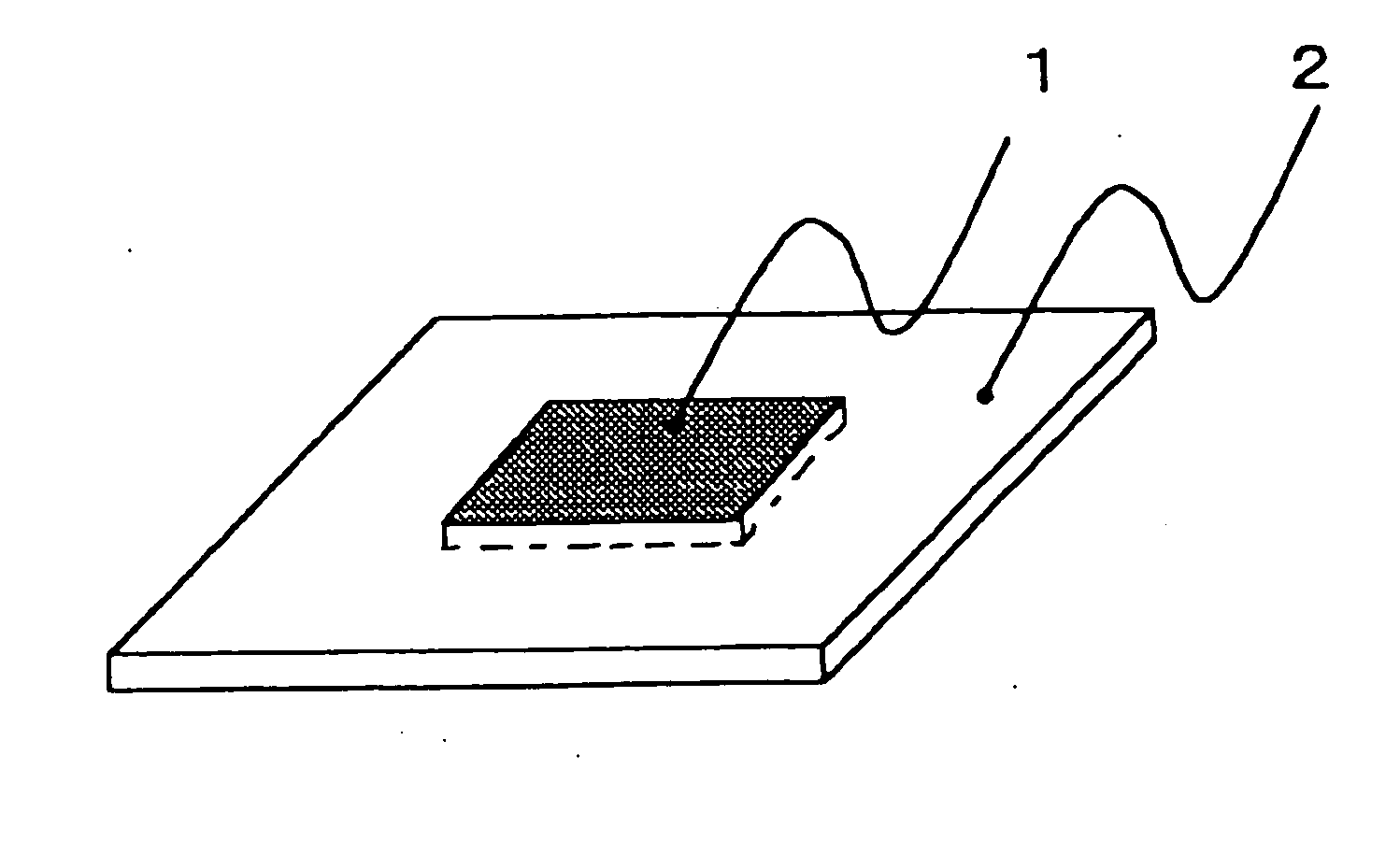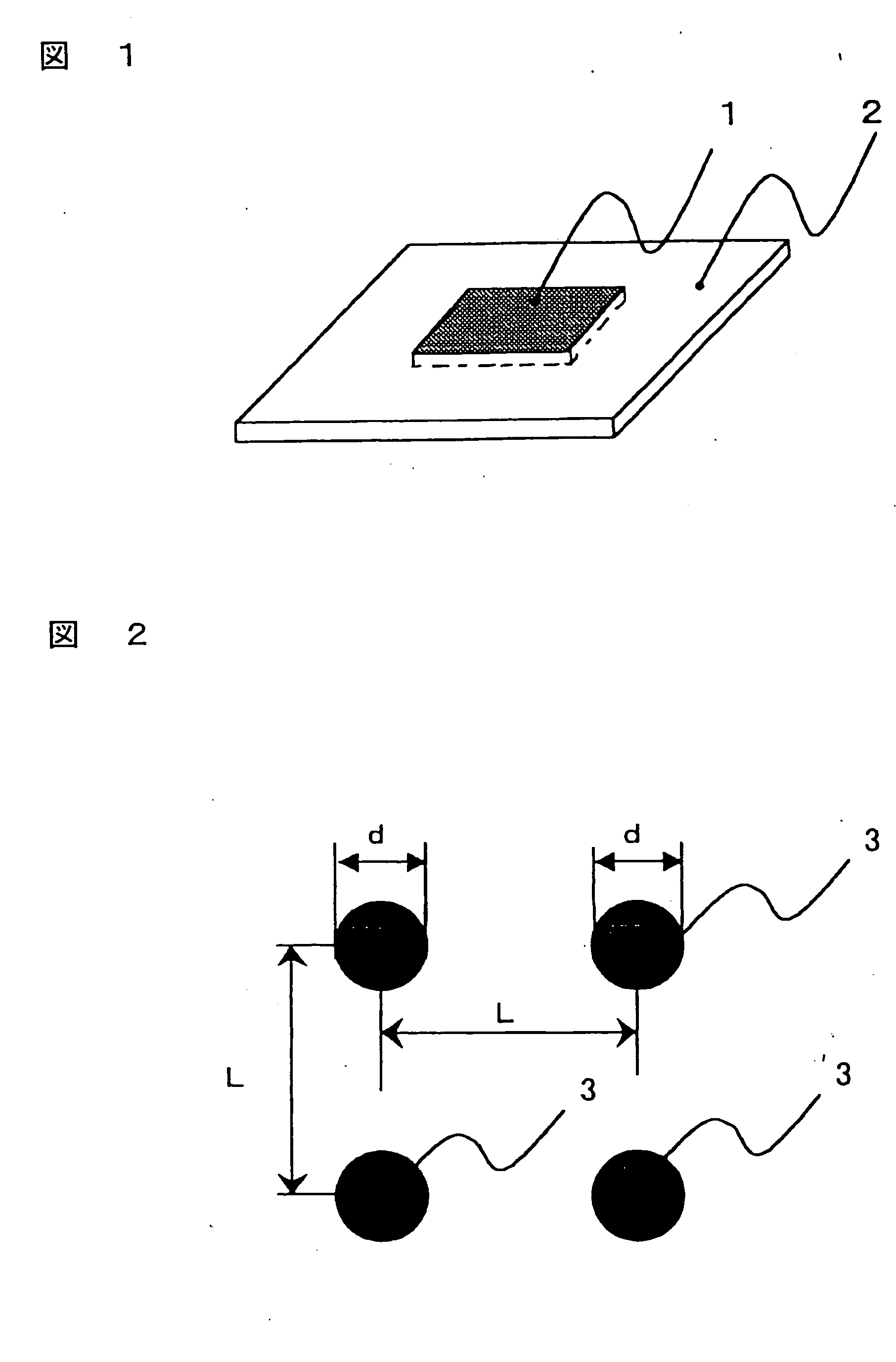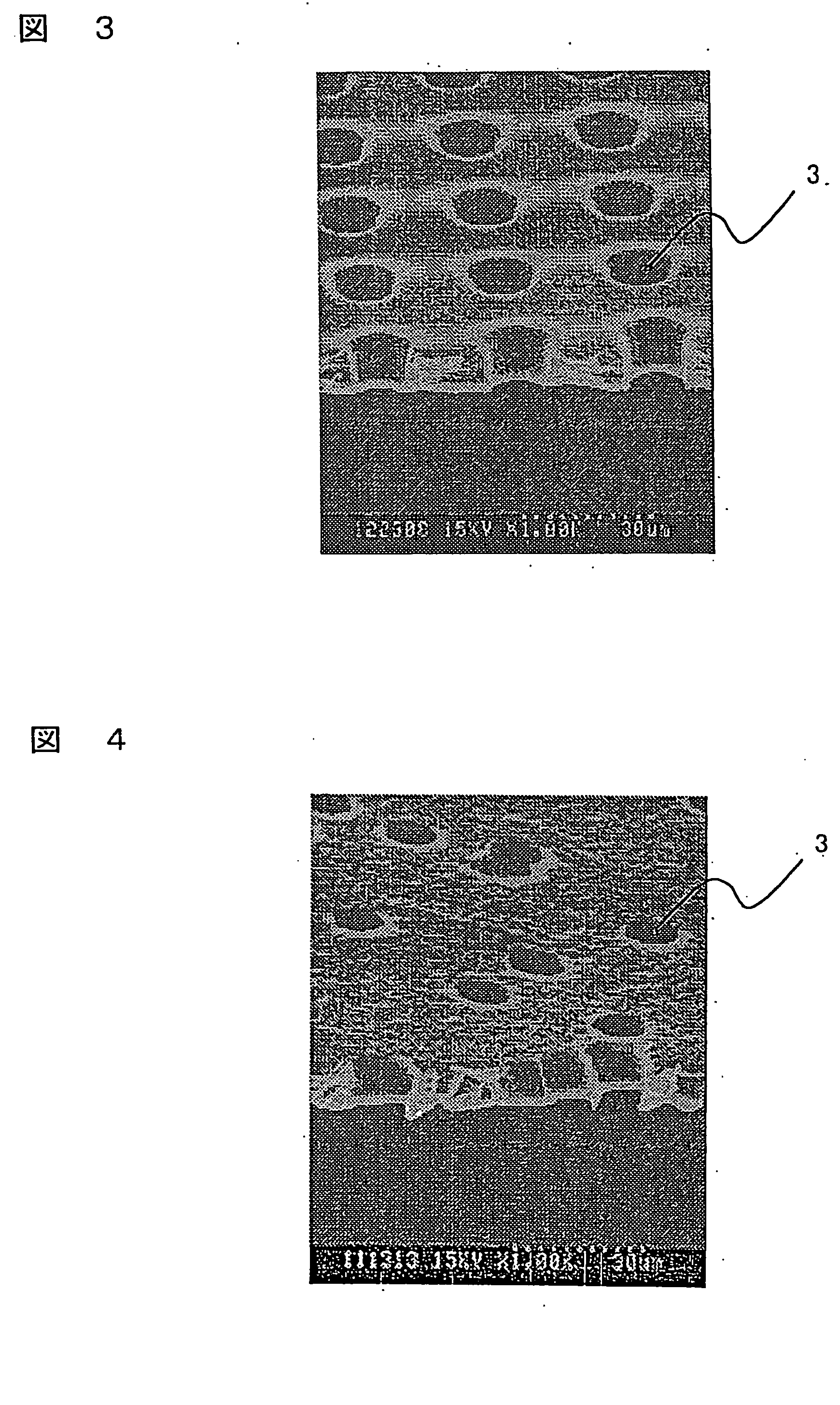Polymer electrolyte film and method for preparation of the same, and solid polymer type fuel cell using the same
a technology of polymer electrolyte and polymer film, which is applied in the field of polymer electrolyte membrane (pem), can solve the problems of lowering the cellular output power and energy efficiency
- Summary
- Abstract
- Description
- Claims
- Application Information
AI Technical Summary
Benefits of technology
Problems solved by technology
Method used
Image
Examples
example 1
[0100] (1) Preparation of Multipore Film
[0101] A silicon wafersilicon wafer was coated with negative-type photosensitive polyimide by spin coating and pre-baked at 110° C. The silicon wafersilicon wafer was radiated through a photo mask, developed, washed and then full-baked at 350° C. The above was submerged into hydrofuluoric acid solution, and the porous polyimide film was obtained by exfoliation from the silicon wafersilicon wafer. The obtained film is as shown in FIG. 1, wherein the porous polyimide film was a square shape with the external size of 8 cm×8 cm and the thickness of 10 μm; the porous area (1) in the center was a square with the external size of 2.2 cm×2.2 cm and the porous area (1) was surrounded by non-porous area (2). The porous area (1) was bored with collimated pores (3) whose diameter d was about 12 μm, wherein the center distance of the collimated pores L was about 33 μm, the porosity about 11% and the number of the collimated pores about 442,000. The relati...
example 2
[0108] (1) Preparation of Multipore Film
[0109] A silicon wafersilicon wafer was coated with negative-type photosensitive polyimide by spin coating and pre-baked at 110° C. The silicon wafersilicon wafer was radiated through a photo mask with the pore disposition represented in FIG. 7, developed, washed and then full-baked at 350° C. The above was submerged into hydrofuluoric acid solution, and the porous polyimide film was obtained by exfoliation from the silicon wafersilicon wafer. The obtained film is as shown in FIG. 1, wherein the porous polyimide film was a square with the external size of 8 cm×8 cm and the thickness of 10 μm; the porous area (1) in the center was a square had external size of 2.2 cm×2.2 cm and the porous area (1) was surrounded by non-porous area (2). The porous area (1) was bored with the collimated pore (3) whose diameter d was 12 μm, wherein the porosity and the number of the collimated pores were about 11% and about 440,000, respectively. The relative sta...
example 3
[0120] (1) Preparation of Multipore Film
[0121] The porous polyimide film was prepared pursuant to processing (1) of Example 1. The porous area (1) of the obtained film was bored with collimated pores (3) whose diameter d was 20 μm, wherein L, the center distance of the collimated pores, the porosity and the number of the collimated pores were about 32 μm, about 30% and about 480,000, respectively. The pore disposition was the same as that of Example 1. The relative standard deviation (LVar / LAve) was 0.16 with calculations of LAve, the average of L the center distances between adjacent collimated pores and its standard deviation, LVar.
[0122] (2) Preparation of PEM
[0123] PEM was prepared using the porous polyimide film that was processed by charging the multipore film of the above processing (1) with the proton conductor Nafion polymer as in Example 1. The membrane thickness was about 35 μm.
[0124] (3) Preparation and Evaluation of PEFC
[0125] MEA was prepared by sandwiching PEM of...
PUM
| Property | Measurement | Unit |
|---|---|---|
| Pore size | aaaaa | aaaaa |
| Porosity | aaaaa | aaaaa |
| Molar density | aaaaa | aaaaa |
Abstract
Description
Claims
Application Information
 Login to View More
Login to View More - R&D
- Intellectual Property
- Life Sciences
- Materials
- Tech Scout
- Unparalleled Data Quality
- Higher Quality Content
- 60% Fewer Hallucinations
Browse by: Latest US Patents, China's latest patents, Technical Efficacy Thesaurus, Application Domain, Technology Topic, Popular Technical Reports.
© 2025 PatSnap. All rights reserved.Legal|Privacy policy|Modern Slavery Act Transparency Statement|Sitemap|About US| Contact US: help@patsnap.com



